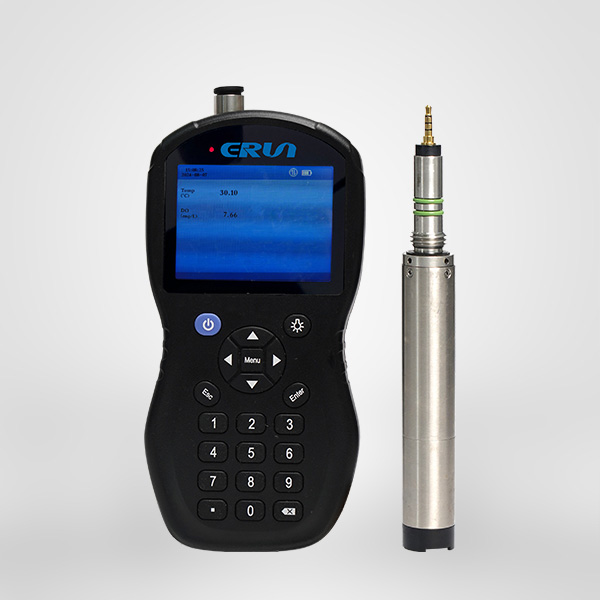Chlorophyll a is the green pigment found in all algae and cyanobacteria (blue-green algae). Measuring its concentration in surface water – lakes, reservoirs, rivers, and coastal areas – is a critical indicator of algal biomass and overall water health. High levels signal potential problems like eutrophication (nutrient over-enrichment), harmful algal blooms (HABs), oxygen depletion, and degraded water quality for drinking, recreation, and aquatic life. But what are the **standard limits for chlorophyll a content**, and what testing instruments are used by professionals to monitor it? This guide provides clear answers.

Understanding chlorophyll a levels is fundamental to effective water resource management:
Early Warning for HABs:Spikes in chlorophyll a often precede visible blooms, including toxic cyanobacteria blooms.
Eutrophication Assessment: It's a primary metric for evaluating nutrient pollution impacts.
Regulatory Compliance: Many jurisdictions set enforceable chlorophyll a limits or targets as part of water quality standards.
Drinking Water Safety: High algal biomass can clog filters, produce taste/odour compounds, and harbor toxins.
Ecosystem Health: Excessive algae disrupts food webs, reduces biodiversity, and causes hypoxia (low oxygen) when it decomposes.
Recreational Use: Blooms make water unsightly, smelly, and potentially hazardous for swimmers.
Global & Regional Standards for Chlorophyll a in Surface Water
Unlike some pollutants with universally strict numeric limits (e.g., certain heavy metals), chlorophyll a standards are often set as guideline values, targets, or thresholds within broader waterbody classifications. These limits vary significantly based on:
1. Waterbody Type: Lakes/reservoirs vs. rivers vs. estuaries vs. coastal waters.
2. Designated Use: Drinking water source, recreation (swimming), fisheries, aquatic life habitat.
3. Ecoregion: Naturally occurring background levels differ geographically.
4. Regulatory Framework: National or regional agency guidelines.
Here's an overview of key standard limits from major authorities:
United States Environmental Protection Agency (EPA):
The EPA provides recommended criteria within its National Recommended Water Quality Criteria and guidance documents like Nutrient Criteria Technical Guidance Manual: Lakes and Reservoirs.
Criteria are often ecoregion-specific. For example:
Ecoregion IX (Southern Plains): Mean Summer Chlorophyll a target of < 14 µg/L for lakes/reservoirs.
Ecoregion XI (Central Plains): Mean Summer Chlorophyll a target of < 12 µg/L.
Estuaries/Coastal Waters: Criteria vary widely; e.g., Gulf of Mexico coastal systems might have targets around < 5 µg/L to < 40 µg/L depending on the specific waterbody assessment.
States adopt these as standards or develop their own. For instance, Florida has numeric nutrient criteria including chlorophyll a thresholds for different waterbody classes (e.g., Class III freshwater: < 20 µg/L monthly geometric mean).
The WFD focuses on achieving "Good Ecological Status" (GES). Chlorophyll a is a key Biological Quality Element for lakes and coastal/transitional waters.
Limits are defined by Member States in their River Basin Management Plans, setting type-specific reference conditions and boundaries (High/Good/Moderate, etc.) for chlorophyll a.
Accurate measurement is vital for assessing compliance with chlorophyll a limits. Methods range from laboratory gold standards to rapid field techniques:
1. Laboratory Methods (Highest Accuracy/Precision):
Spectrophotometry (with Acidification - Standard Method 10200 H):
Process:Water samples are filtered. Chlorophyll is extracted from the filter using acetone (90%). The extract's optical density is measured before and after acidification to calculate chlorophyll a concentration, correcting for pheophytin (a degradation product).
Instrument: Laboratory spectrophotometer or UV-Vis spectrophotometer (e.g., models from Hach, Shimadzu, Thermo Fisher Scientific).
Pros: Considered the reference method; high accuracy; corrects for degradation.
Cons: Time-consuming (hours); requires lab facilities; involves hazardous solvents; delayed results.
High-Performance Liquid Chromatography (HPLC - Standard Method 10200 I):
Process: Pigments are extracted and then separated by HPLC. Chlorophyll a is identified and quantified based on its unique retention time and absorbance spectrum.
Instrument: HPLC System with Diode Array Detector (DAD) or Fluorescence Detector.
Pros: Highest specificity; can separate and quantify chlorophyll a, b, c, and specific pigments indicating algal groups (e.g., cyanobacteria); accurate.
Cons: Very expensive instrumentation; highly technical expertise required; slow; lab-bound.
2. In Vivo Fluorescence (Rapid Field/Lab Screening):
Process: Chlorophyll a molecules fluoresce (emit light) when excited by specific wavelengths of light. Field fluorometers measure this natural fluorescence *in vivo* (in the living cells) without extraction.
Instrument: Portable, handheld, or submersible fluoroprobes.
Featured Solution: The ERUN-SP8-ASC-L3 Submersible Online Chlorophyll Fluorescence Analyzer (Erunwas Environmental Technology Co., Ltd.) is a prime example of professional-grade instrumentation designed for continuous, real-time monitoring.
Key Features & Benefits:
Continuous Monitoring: Provides real-time data crucial for detecting rapid bloom formation and tracking dynamics, far surpassing grab sampling frequency.
In-Situ Deployment: Submersible design allows direct placement in the water body (rivers, lakes, reservoirs, coastal areas) at the depth of interest.
High Sensitivity: Detects low levels relevant for early warning.
Anti-Fouling: Incorporates wipers or other mechanisms (like the ASC - Automatic Scraping Cleaner) to minimize biofouling impact on sensor readings, essential for long-term deployments.
Data Logging & Output: Integrated logging and standard outputs (4-20mA, RS485) for integration into SCADA systems or telemetry networks.
Robust Construction: Designed for harsh aquatic environments.
Calibration: Pre-calibrated, requires periodic verification/calibration against lab methods for highest accuracy.
Conclusion: Vigilance Through Standards and Technology
Understanding and adhering to chlorophyll a limits or targets is fundamental for protecting surface water resources from the damaging effects of eutrophication and harmful algal blooms. While standard limits vary globally and regionally based on waterbody type and use, consistent monitoring is key. Combining the accuracy of laboratory methods (spectrophotometry, HPLC) for regulatory compliance with the power of real-time, continuous monitoring using advanced fluorometers like the ERUN-SP8-ASC-L3 provides the most comprehensive and actionable picture of water quality health. This integrated approach enables water managers, environmental agencies, and researchers to detect problems early, respond effectively, and ensure our lakes, rivers, and reservoirs remain vibrant and sustainable ecosystems. Investing in the right testing instruments is an investment in the future of our water.